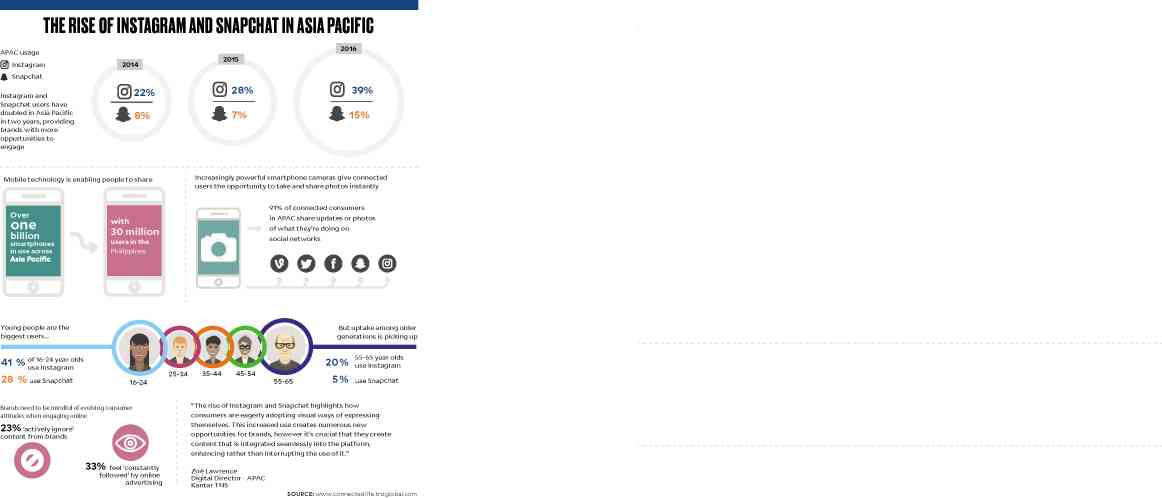Brand managers’ challenge: Make the audience scroll, stop
Bad news, online marketers: Almost a quarter of your Filipino audience ignores brand posts on social media, according to a study by international research agency Kantar TNS.
But therein lies the challenge, said Zoë Lawrence, Kantar TNS Asia Pacific director for digital.
“[Brands] need to really work hard on their creative development. In a busy feed where you can just scroll past [content], you have to do something to make people stop and dwell,” Lawrence said.
The upside, Lawrence added, is that “connected” consumers have become multiplatform users.
“They don’t move away from the platforms they’re already using, but add platforms. So the fragmentation of the environment is something that is quite interesting,” she said.
Article continues after this advertisementLawrence and Kantar TNS global CEO for media and digital effectiveness Gonzalo Fuentes recently presented the findings of their annual “Connected Life” study, which showed that while people are still mostly on Facebook, global usage of Instagram and Snapchat rose rapidly in the past year.
Article continues after this advertisementIn the Philippines, Lawrence said a third of connected consumers are now on Instagram, from just 22 percent last year. The key is to understand which platform is the best one to use to reach your brand’s target audience, as each platform also has its own set of characteristics.
“While Facebook gives you great reach, Instagram and Snapchat present a different media opportunity for brands to explore,” said Lawrence.
Traditional media, of course, is also still No. 1 when it comes to advertising, especially in a TV country like the Philippines. However, Kantar TNS’ figures showed that while 39 percent of Filipinos own a TV, the percentage of those who use smartphones have taken a slight lead by just one percent.
“Forty-four percent of Filipinos’ time is spent on their mobile devices, but only seven percent of media spending goes to digital,” said Fuentes. “Furthermore, 41 percent of the population spend less than an hour watching TV, 50 percent of whom are between the ages of 16 and 24.”
It’s exactly this demographic who are the heaviest users of social media platforms, and should brands fail to reach them, they could “risk losing a generation,” said Fuentes.
Since the consumption of video is also on the rise, instead of just TV, brands can make good use of “heavily visual” platforms Instagram and Snapchat, said Lawrence. Their strategy, however, should also be studied carefully, as some brands that thrive on Instagram wouldn’t necessarily fit in with Snapchat.
“Instagram allows you to curate your gallery. You can really create something that’s very true to your brand values. Snapchat advertising is very new; it’s a bit more raw, more real life. So that has to be something your brand adheres to,” she said.
Fuentes also dished out a couple more tips for creating videos: don’t be annoying, and make sure you can sustain your audience’s attention after engaging them.
Timing is also key, as, unlike TV which has primetime spots, any time of day is fair game for brands as connected consumers are almost always online, added Lawrence.
But as with any media platform, traditional or new, Lawrence reminded brands to stick to the most basic principle of good content development: provide people with good stories. “Brands must understand their market and develop content that is of value to them,” she said.
